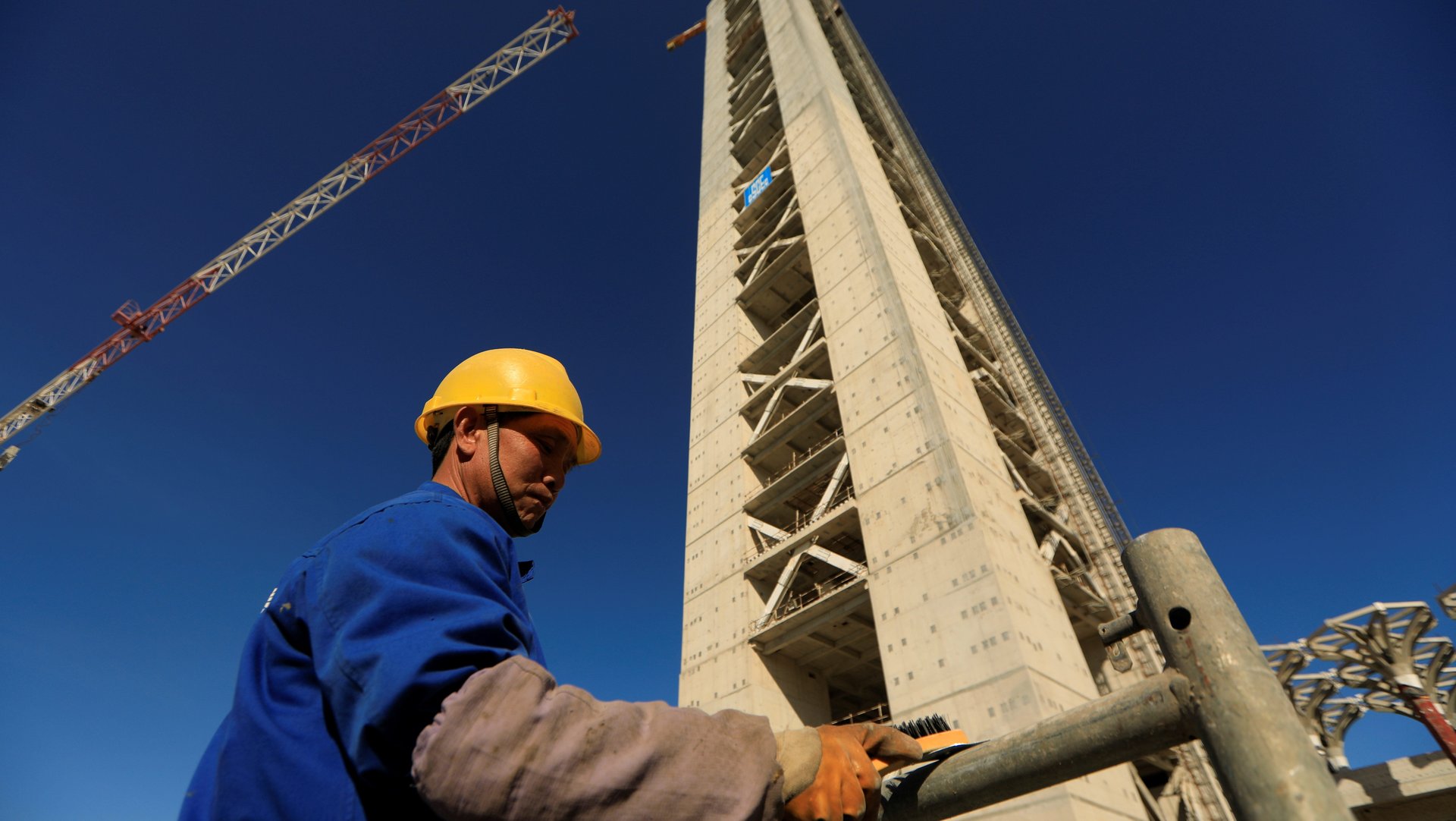How many Chinese workers are there in Africa now?
Ever since former New York Times journalist Howard French’s must-read, China’s Second Continent: How a Million Migrants Are Building a New Empire in Africa was published in 2014, there’s been a lot of curiosity and increased awareness in the West about the rising presence of Chinese laborers across the continent.


Ever since former New York Times journalist Howard French’s must-read, China’s Second Continent: How a Million Migrants Are Building a New Empire in Africa was published in 2014, there’s been a lot of curiosity and increased awareness in the West about the rising presence of Chinese laborers across the continent.
For ordinary Africans it’s a daily reality and at times a source of local labor tensions in many countries with high unemployment rates as they see thousands of Chinese workers and managers leading dozens of government-commissioned infrastructure projects in their cities and beyond.
But while French’s “million” number might have been an informed estimate, the China Africa Research Initiative (CARI), a project at the John Hopkins School of Advanced International Studies, has been keeping track of the official data going back to 2005. These official numbers will likely not include the hundreds of Chinese migrants who stay on in a country after the infrastructure project they were invited to work on is completed, or the thousands of entrepreneurs and artisans who come to seek their fortune in Africa be it in local retail, small-scale manufacturing or artisanal mining for example.
But CARI’s data does capture the wider trend which shows the official number of Chinese workers in Africa has been trending downwards. At the end of 2019, the most recent data available reveals there were 182,745 Chinese workers in Africa, mostly spread across some 10,000 Chinese-owned businesses.
The number of Chinese workers in Africa has declined by 30.7% over the last five years. After reaching a peak of 263,659 workers in 2015, Chinese labor force in Africa has dropped consistently since 2016. The decline coincides with the slump in commodities prices over the same period. While the Chinese workforce numbers in Algeria and Angola remain strong, the figures are 48% lower today than 2015.
There is often a strong correlation between high foreign direct investments (FDI), contract revenues, loans, and the number of Chinese workers, shows analysis by Beijing-based think tank, Development Imagined. This might not be surprising, considering how vital overseas lending is to China’s Belt and Road Initiative, an ambitious project across geopolitical zones.
For example, Algeria, Angola, and Nigeria—three of Africa’s largest oil producers—with 42,999, 22,868 and 12,199 documented workers respectively, house the highest number of Chinese workers in Africa. These countries are also top recipients of Beijing investment and have chosen Chinese companies as partners in infrastructure projects including railways, roads, and ports.
Between 2005 and 2020, Algeria, Angola, and Nigeria have received $23.9 billion, $24.7 billion and $40.15 billion in Chinese investment and contracts, according to data from the American Enterprise Institute (AEI).
Crashing commodity prices may indirectly cause the decline in Chinese workers’ number, Hannah Ryder, chief executive of Development Reimagined. “Commodity prices can feed into the ability of governments to access foreign exchange and therefore raise or pay for debt,” she said. “Thus, if commodity prices fall, African governments may take less loans, and thus fewer workers may come.”
However, she posits that the types of projects Beijing is willing to finance, and the domestic labor policies of African countries, designed to improve job creation, play more significant roles in the rise or fall in the Chinese workforce on the continent. For example, between 2005 and 2018, Chinese loans have flowed into four major sectors: transport, power, mining, and communication. Labor intensity and requirement of local expertise varies across these industries and projects, impacting whether or not a contingent of Chinese workforce (and specialists) needs to be deployed.
But while the total number of Chinese workers is falling in Africa it is picking up pace in some specific countries including Guinea, Mauritania, and Uganda, even if their numbers are relatively small. Over the last few years, China has announced multiple investments and loans to the three countries. In Uganda, for example, China invested $138.3 million in construction projects in the third quarter of 2020. Chinese loans account for more than 39% of Kampala’s total debt.
Sign up to the Quartz Africa Weekly Brief here for news and analysis on African business, tech, and innovation in your inbox